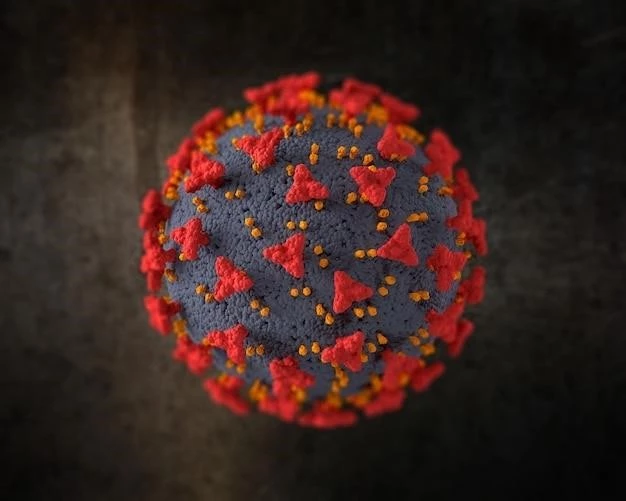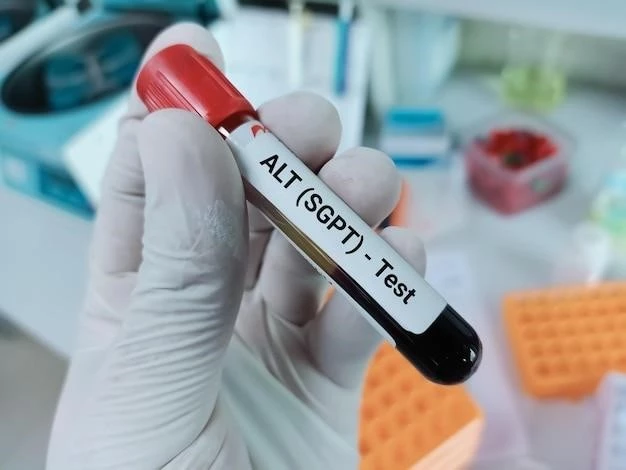Understanding Waldenstrom’s Macroglobulinemia
Waldenstrom’s Macroglobulinemia is a rare disorder affecting blood plasma cells, leading to an overproduction of abnormal proteins. Understanding its causes, symptoms, and treatment is vital. This article aims to provide comprehensive insights into the condition, empowering patients and caregivers with knowledge to navigate through the diagnosis, prognosis, and treatment options available.
Introduction to Waldenstrom’s Macroglobulinemia
Waldenstrom’s Macroglobulinemia, also known as Lymphoplasmacytic Lymphoma, is a rare type of blood cancer characterized by the overproduction of abnormal plasma cells in the bone marrow. These cells produce excessive amounts of a specific protein called monoclonal immunoglobulin M (IgM), leading to thickening of the blood.
While the exact cause of Waldenstrom’s Macroglobulinemia remains unknown, it is classified as a type of non-Hodgkin lymphoma. This condition typically affects older adults, with men being slightly more predisposed than women.
Individuals with Waldenstrom’s Macroglobulinemia may experience a range of symptoms, including weakness, fatigue, weight loss, and vision problems. The overproduction of IgM can lead to issues such as abnormal bleeding, headaches, dizziness, and an enlarged spleen or lymph nodes.
Diagnosing Waldenstrom’s Macroglobulinemia involves a thorough physical examination, blood tests to detect abnormal protein levels, bone marrow biopsy, and imaging tests. Early detection is crucial for effective management of the disease.
Waldenstrom’s Macroglobulinemia is a chronic condition that requires ongoing treatment to manage symptoms and slow disease progression. Patients often benefit from a multi-disciplinary approach involving hematologists, oncologists, and other healthcare professionals.
As we delve into the causes, symptoms, diagnosis, prognosis, and treatment options for Waldenstrom’s Macroglobulinemia, it is essential to approach this condition with a proactive mindset, seeking support from medical professionals and engaging in self-care practices to enhance quality of life.
Causes and Risk Factors
The exact cause of Waldenstrom’s Macroglobulinemia is not yet fully understood. However, certain risk factors have been identified that may contribute to the development of this rare blood disorder. These include⁚
- Age⁚ Waldenstrom’s Macroglobulinemia primarily affects older adults, with the average age of diagnosis being around 65 to 70 years old.
- Gender⁚ Men are slightly more likely to develop Waldenstrom’s Macroglobulinemia compared to women.
- Familial predisposition⁚ While rare, there may be a genetic component involved in the development of Waldenstrom’s Macroglobulinemia.
- Exposure to certain chemicals⁚ Some studies suggest that exposure to certain chemicals or toxins may increase the risk of developing Waldenstrom’s Macroglobulinemia.
It is important to note that these risk factors do not guarantee the development of the condition, and many individuals diagnosed with Waldenstrom’s Macroglobulinemia do not have any identifiable risk factors. Research into the underlying causes of this disease is ongoing, with a focus on identifying genetic mutations and environmental factors that may play a role in its development.
Understanding the potential causes and risk factors associated with Waldenstrom’s Macroglobulinemia can help individuals and healthcare providers take proactive steps towards early detection, diagnosis, and management of this rare blood disorder. Stay informed, communicate openly with your healthcare team, and prioritize regular health check-ups to ensure timely intervention if needed.

Symptoms of Waldenstrom’s Macroglobulinemia
Waldenstrom’s Macroglobulinemia presents a variety of symptoms that can vary in severity and impact on daily life. Recognizing these symptoms is crucial for early detection and prompt medical intervention. Common symptoms of Waldenstrom’s Macroglobulinemia include⁚
- Weakness and Fatigue⁚ Feeling extremely tired and lacking energy even after adequate rest.
- Weight Loss⁚ Unexplained weight loss that occurs without changes in diet or physical activity.
- Vision Problems⁚ Blurred vision, vision loss, or other visual disturbances.
- Headaches⁚ Persistent or severe headaches that may not respond to typical pain relief medications.
- Dizziness⁚ Feeling lightheaded, dizzy, or experiencing vertigo.
- Easy Bruising and Bleeding⁚ Unexplained bruises, nosebleeds, or bleeding gums.
- Enlarged Spleen or Lymph Nodes⁚ Swelling or tenderness in the abdominal area due to an enlarged spleen, or swollen lymph nodes in the neck, armpits, or groin.
It is important to remember that individuals with Waldenstrom’s Macroglobulinemia may not experience all of these symptoms, and some symptoms may overlap with other conditions. If you are experiencing persistent or concerning symptoms, consult a healthcare provider for a comprehensive evaluation and appropriate testing.
By being aware of the common symptoms associated with Waldenstrom’s Macroglobulinemia, you can actively participate in your healthcare journey, facilitate early diagnosis, and access timely treatment to effectively manage the disease and improve your quality of life. Regular communication with your medical team is key to addressing symptoms promptly and optimizing your overall well-being.
Diagnosis of the Condition
Diagnosing Waldenstrom’s Macroglobulinemia requires a comprehensive approach that involves clinical evaluation, laboratory tests, imaging studies, and potentially a bone marrow biopsy. Here are the key steps involved in the diagnostic process⁚
- Medical History and Physical Examination⁚ Your healthcare provider will review your symptoms, medical history, and perform a physical examination to assess for signs of Waldenstrom’s Macroglobulinemia.
- Blood Tests⁚ Blood tests are essential to check for abnormal levels of proteins, particularly monoclonal immunoglobulin M (IgM) and other blood cell counts.
- Imaging Studies⁚ Imaging tests such as CT scans, MRIs, or PET scans may be conducted to evaluate the extent of organ involvement and detect any abnormalities.
- Bone Marrow Biopsy⁚ A bone marrow biopsy involves taking a sample of bone marrow tissue to examine the presence of abnormal plasma cells characteristic of Waldenstrom’s Macroglobulinemia.
Additionally, genetic testing and flow cytometry analysis may be performed to further characterize the disease and guide treatment decisions. It is important to undergo these diagnostic procedures under the supervision of experienced healthcare professionals specialized in hematologic malignancies.
Obtaining an accurate diagnosis of Waldenstrom’s Macroglobulinemia is vital for developing a personalized treatment plan tailored to your specific needs. If you suspect you may have symptoms suggestive of this condition, seek prompt evaluation and collaborate closely with your medical team to ensure a timely and precise diagnosis.
Remember, early detection through thorough diagnostic testing can lead to timely interventions, improved outcomes, and better management of Waldenstrom’s Macroglobulinemia. Stay proactive in your healthcare journey and advocate for your well-being by seeking timely medical attention and adhering to recommended diagnostic protocols.
Prognosis and Progression of the Disease
Understanding the prognosis and progression of Waldenstrom’s Macroglobulinemia is essential for patients and their families to make informed decisions regarding treatment and care. The outlook for individuals with this condition can vary based on several factors, including⁚
- Stage of the Disease⁚ The stage at which Waldenstrom’s Macroglobulinemia is diagnosed can influence the prognosis, with early-stage cases often having a more favorable outlook.
- Extent of Organ Involvement⁚ The involvement of vital organs such as the bone marrow, spleen, or lymph nodes can impact disease progression and overall prognosis.
- Blood Cell Counts⁚ Abnormalities in blood cell counts, particularly low levels of red blood cells or platelets, may affect the prognosis of Waldenstrom’s Macroglobulinemia.
- Response to Treatment⁚ How well an individual responds to treatment modalities can significantly influence long-term outcomes and disease progression.
While Waldenstrom’s Macroglobulinemia is considered a chronic condition, the disease course can vary from person to person. Some individuals may experience indolent (slow-growing) disease that may not require immediate treatment, while others may have more aggressive disease that necessitates prompt intervention.
Regular monitoring, adherence to treatment plans, and close communication with healthcare providers are crucial for managing Waldenstrom’s Macroglobulinemia effectively and optimizing quality of life. By staying informed about the prognosis and progression of the disease, individuals can actively participate in decisions regarding their care and well-being.
Remember that each person’s journey with Waldenstrom’s Macroglobulinemia is unique, and accessing appropriate medical support, emotional resources, and lifestyle adjustments can contribute to better outcomes and a more proactive approach to managing this complex blood disorder.
Treatment Options Available
Managing Waldenstrom’s Macroglobulinemia involves a tailored approach that considers the individual’s health status, disease progression, and treatment goals. Several treatment options are available to address this rare blood disorder, including⁚
- Watchful Waiting⁚ In cases of asymptomatic or slow-growing Waldenstrom’s Macroglobulinemia, a watchful waiting approach may be recommended, with regular monitoring to track disease progression.
- Chemotherapy⁚ Chemotherapy drugs may be prescribed to target and kill abnormal plasma cells, particularly in individuals with more advanced or symptomatic disease.
- Monoclonal Antibodies⁚ Monoclonal antibodies such as rituximab can be used to specifically target cancer cells, aiding in the destruction of malignant plasma cells.
- Plasma Exchange⁚ Plasma exchange procedures may be conducted to remove excess abnormal proteins from the blood, reducing the risk of complications related to hyperviscosity.
- Stem Cell Transplant⁚ For eligible patients with aggressive Waldenstrom’s Macroglobulinemia, a stem cell transplant may be considered to replace diseased bone marrow with healthy stem cells.
It is essential for individuals with Waldenstrom’s Macroglobulinemia to work closely with a multidisciplinary healthcare team, including hematologists, oncologists, and supportive care providers, to determine the most suitable treatment approach. Each treatment modality comes with its own benefits, risks, and potential side effects.
By actively participating in treatment discussions, asking questions, and voicing concerns, patients can make informed decisions about their care and well-being. Lifestyle modifications, such as maintaining a healthy diet, staying physically active, and managing stress, can complement medical interventions and enhance overall quality of life.
Remember that treatment for Waldenstrom’s Macroglobulinemia is highly individualized, and ongoing communication with your healthcare team is key to ensuring that your treatment plan aligns with your needs and preferences. Seek support from loved ones and engage in self-care practices to navigate through the challenges of managing this complex blood disorder.
Lifestyle Changes and Management Strategies
Embracing lifestyle changes and implementing effective management strategies can significantly impact the well-being and quality of life of individuals with Waldenstrom’s Macroglobulinemia. Here are some practical tips and recommendations to consider⁚
- Healthy Diet⁚ Maintain a balanced diet rich in nutrients, fruits, vegetables, and whole grains to support overall health and immune function.
- Stay Hydrated⁚ Proper hydration is crucial in preventing complications related to blood thickening. Aim to drink an adequate amount of water daily.
- Regular Exercise⁚ Engage in physical activity suitable for your fitness level to boost energy, enhance circulation, and promote overall well-being.
- Stress Management⁚ Practice stress-reducing techniques such as yoga, meditation, deep breathing, or mindfulness to cope with the emotional challenges of living with a chronic illness.
- Sleep Hygiene⁚ Prioritize quality sleep by establishing a relaxing bedtime routine and creating a comfortable sleep environment.
- Monitor Symptoms⁚ Keep track of any new or worsening symptoms and report them to your healthcare team promptly for evaluation and management.
- Support Network⁚ Seek support from family, friends, support groups, or mental health professionals to navigate the emotional aspects of living with Waldenstrom’s Macroglobulinemia.
Additionally, following your prescribed treatment plan, attending regular medical appointments, and communicating openly with your healthcare providers are essential components of managing Waldenstrom’s Macroglobulinemia effectively. By taking an active role in your care and prioritizing self-care practices, you can enhance your overall quality of life and well-being.
Remember, every individual’s journey with Waldenstrom’s Macroglobulinemia is unique, and adopting a holistic approach that addresses physical, emotional, and social needs can empower you to face the challenges posed by this rare blood disorder. Stay informed, stay connected, and stay resilient as you navigate through your health journey.
